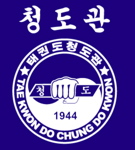 Bruisers vs. weenies....
Bruisers vs. weenies....

This is from an email I sent to a Korean Martial Arts List I'm on (The Dojang on
http://www.martialartsresource.com, you can retrieve the unedited message from their
archives)
I'm not sure who said this first section....
> "......If you train for recreation, with your family that is great. I
> can respect that, just be careful not to get a false since of security. If you
> think you are training realisticly test yourself realisticly. This does not mean
> you have to fight to the death, or knock each other out. Just have someone
> big grab you and tell them not to let you go unless you force it to
> happen. Put somebody on top of you and tell them not to let you up unless you
> force it to happen. Put on the pads and tell someone to attack with out regard
> for your safety. This will be a humbling experience.,,,,"
>
Someone else (Bruce) replied with...
> I agree with this entire post. I think it is accurate and to the
> point. Where things start going hay-wire is the matter of people
> getting up the next day and going about their "real lives". For
> instance, traditionally, the Korean martial tradition was borne of a
> small cadre of professionals who kept a force of corvee troops up to
> minimal standards with regular training-- say, once a month or every
> three weeks--- whatever. When these "draftees" were swinging sticks
> around they might just as easily been used to resurface a road or
> rebuild a bridge.
> Now lets look at it from the art's side
> Get a bunch of people together and let them know that you are going
> to train them well. Lots of conditioning and drills and full-contact
> sparring (no face or head contact). Call it Kyokushin Karate. The
> young jocks stick around and everyone else leaves. Then among the
> young jocks the numbers thin out in favor of the big, fire-plug types.
> What you wind up with are guys who probably beat ass anyhow and
> now have a place where they can bone-up on beating-ass.
> OK-- now lets put the two pieces together.
> On the one hand you have typical people who want to feel more
> confident in a pretty scary world. They will probably never use their
> techniques but it makes themselves feel all warm and cozy to think
> they are the baddest person on two legs even if they can't handle
> showing up at home or work with a bruise or two.
>
> On the other hand you have bruisers who can't wait to stomp somebody
> whether they use a martial art steeped in centuries of tradition or
> not.
>
> Take these two groups and put one group on one end of a pain
> continuum and the other group on the other end. The survival of the
> Hapkido arts is somewhere between these two points would you say?
> Thoughts? Comments?
Since I don't train in Hapkido, let me open this up to all martial
arts, as I don't think there is anything style specific in this
discussion.
I think the progression that Bruce points out is accurate. If you're
entire training curriculum is hard-core -- only the big
Bruisers will
come and practice with you. But, this neglects the fact that martial
arts training -- changes people. People who train for a considerable
length of time will develop in unexpected ways. Personally, when I
started training there is NO WAY I would've trained in a hard core
martial art like Kyokushin. And there is NO WAY I would've done
anything full contact whatsoever. But, now I can see doing training in
Kyokushin, and do some contact training. And now my ability to take
pain from either contact or joint manipulation is pretty dang high. Now
granted this is after 22+ years of training, but I've gone through
development in pain tolerance along the way.
On the other side of the spectrum is that I think most weenies KNOW
they aren't
bruisers! As
I started my training I gained some
confidence, but I knew I wasn't "the baddest person on two legs". I
still was easily intimidated for a very long period of time. But, I was
much more capable of responding to an attack having HAD some training
than not having any at all! So it's still worthwhile training weenies.
Weenies can grow up -- I have. Weenies are also probably the ones that
need the most training as well.
My point is that if someone trains in the martial arts for a long
enough period of time -- it will change them! The key is being able to
keep them in for a very long period of time, and ramp their training up
as they progress. Once, students reach higher levels -- their ability
to take contact and pain -- will be higher and you can do harder drills
than you can with new white belt weenies. Eventually, you should be
able to do the very type of drills that were given in the beginning of
this message...
Erik Kluzek, Dec/1/2005
|








 For more information Contact Master Erik Kluzek at: erik@coloradobluewave.org or (303)772-6225 or
mail to COBWAMA, PO Box 2507, Longmont CO 80502-2507
For more information Contact Master Erik Kluzek at: erik@coloradobluewave.org or (303)772-6225 or
mail to COBWAMA, PO Box 2507, Longmont CO 80502-2507